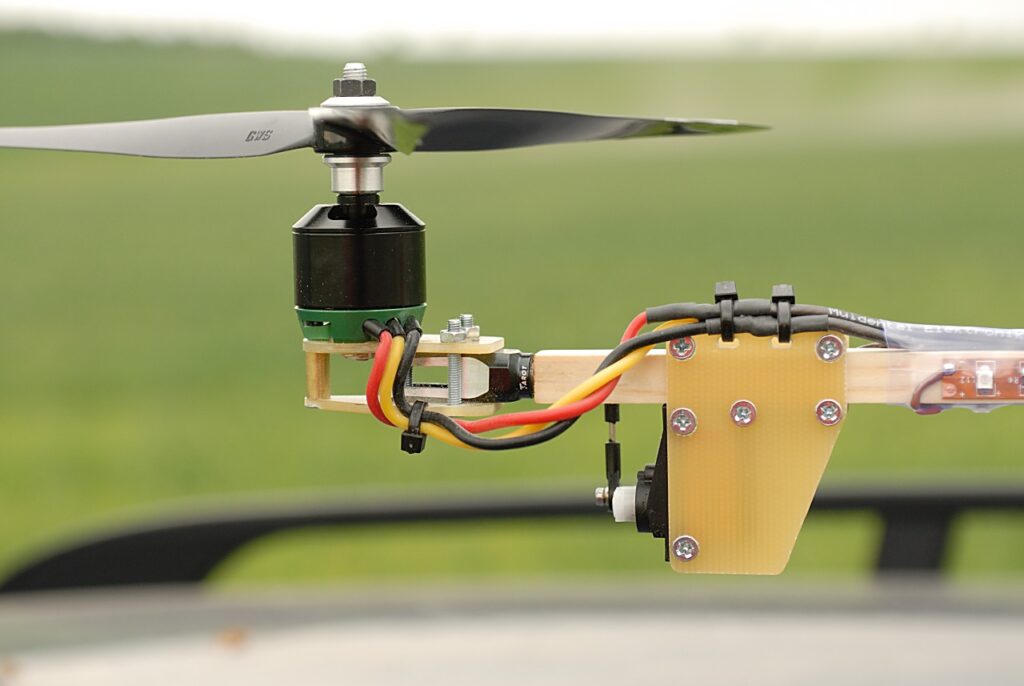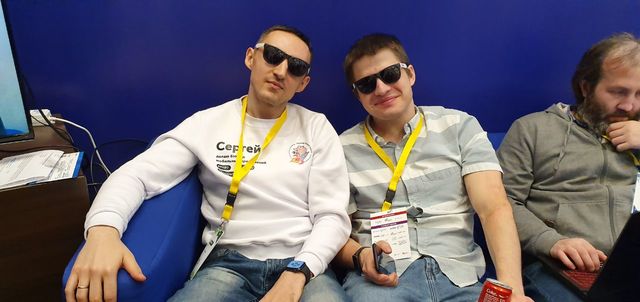Нулевой дайджDigest Zero received positive feedback and I decided to keep taking notes on interesting content from podcasts and articles. You can read the previous digest here. On my own, I highly recommend listening to the episodes on your own, and not reading my digests, because I may miss the details or misunderstand. But sometimes it's better to read not everything in text than to never listen to the episode itself :)Digest Zero received positive feedback and I decided to keep taking notes on interesting content from podcasts and articles. You can read the previous digest here. On my own, I highly recommend listening to the episodes on your own, and not reading my digests, because I may miss the details or misunderstand. But sometimes it's better to read not everything in text than to never listen to the episode itself 🙂

So, the first digest is offered to your attention. Today in the issue - the 163rd issue of a submarine about tech blogging and the release of AichiBoroda about drone delivery.
Podlodka # 163. Technoblogging
Technoblogging, in my understanding, is any kind of blog on technical or near-technical topics. The sub was visited by an experienced tech blogger known for his longreads about blockchain, computational photography and others.
Longread . Long posts that cannot be read in one sitting 🙂
A few words about GOST
For a start, it is worth mentioning that I am grateful to the release for getting to know the vas3k.ru blog. The author writes interesting long posts on various topics. After reading his posts on computational photography and zerocode, I "practically became an expert in these areas." The posts are long and as informative as possible and the content is delivered at the same time easily so as not to fall asleep and succinctly, so that it is useful - if you are interested in the technological component of our life, then read the vastrik 🙂

Although the release of the podcast is called "Technoblogging", you should not think that everything here rests on technical blogs. The recommendations given in this issue will be useful for any other blogs.
How posts are prepared
To collect information for the post, Vasily starts with Google and looks for maximum information on the topic. At some point, there is not enough information on the Internet and you have to immerse yourself in scientific articles (Google Scholar, etc.). As a result, the content is formed in order to write such long posts.
Quoting the author, "Chewing and spitting content on users" - this is how really good content is born on his blog.
Chew and spit content at users
Vastrik on a submarine interview
How to make money on tech blogging
The topic of earnings is generally always interesting. And then I learned something new for myself. Vastrik has ad insertions in posts of all kinds (but not a bit infinite) - simple and tasteful. He also makes money at a closed club with a paid subscription - I never thought that this could work, but the guest claims that this is how an excellent community is born, where there is no goal to zait each other. According to Vastrik, the near future belongs to closed clubs.

If you want to make money on a blog, then you should immediately go to video format. Text is the cheapest format and harder to convert to money than video content.
It also mentions that you can "sell yourself". Not in a bad way (writing shit for money), but finding a sponsor who will support your direction and content. It's also an interesting way - to me it still seems like something beyond the realm of fantasy.
How to write your own blogs
I immediately had a question - why doesn't he post on Habré? Regarding Habr, the guest has repeatedly mentioned that Habr is not the same and the community in it is very toxic - he did not check it, because I almost never read comments on posts. The various communities quickly become stuffy. Only about 5% of the community is a truly valuable asset in the community, and the rest is toxic and stuffy people.

Communities quickly get stuffy - only 5% of the community is usually not stuffy
Vastrik about communities
He writes his posts on his blog, because did not find a suitable site for posts:
- I have already written about Habr above
- The medium seems to be good, but is gradually going downhill with its notifications, banners, etc.
- As I understood "by ear" the Ghost system was mentioned, but I could be wrong. Let me know if I'm wrong. The guest calls it Medium 2.0 with the ability to create closed clubs, etc.
He keeps his blog on the Egeya engine. I looked - interesting. Free for personal blog and paid for company.

ДIt was very surprising for me that the guest spoke positively about the Instagram Stories and told about an interesting example @eva.stories - the Instagram of a girl during the Holocaust. I was very impressed by this story and for me Instagram also grew in my eyes and it turns out that you can post there not only food and business trainers.

How to promote your own blog
In order to declare yourself to the world and promote your blog, you can use collabs.
Collab (from the English. Collaboration) is a term from online art galleries, denoting a joint artistic work.
First page on Yandex
In simpler terms, negotiate with other bloggers and sites about cross-posts. So the audience of others will know about you and your audience will know about others 🙂
How to start writing and move forward
The first thing that I remember in my head is that I won't be able to grow and develop strongly without a team. It seems quite obvious, but sometimes it seems to us that "we can do everything" and as a result we burn out and give up.
Regarding how to start everything, it sounds as if a business coach is talking to me - take it and write 🙂 Just start writing on a topic that you either know well or are so interesting that you are ready to spend your resources on studying it.
That is, if you like fitness bracelets - write about them, how you came to them, what you learned and so on with any topic. Any topic has its own audience and its own haters.
The guest does not recommend going to copywriting courses. Courses can lead to the fact that the existing style will be destroyed, and if there is no style, then there will be even less useful from the courses. You just have to start writing yourself and collect feedback.
Production for text is cheap = you can try cheap
Instruments
The hosts of the podcast mentioned an interesting service - grammarly. Speaking in the language of the developers, it is a "linter" for texts in English. Commas, curves of speech turns, etc. - all this is monitored by the service and recommendations are given to improve your text. There is no worthy alternative for the Russian language yet.
If you need to translate a text, it is better to look for like-minded people who are ready to understand the topic and maintain the translation style. It is ineffective to use outsourcing for this - then you still have to finish and fix a lot of things, and sometimes even start from the very beginning.
Aichi Beard. Dronex Engineer Interview
When I first started doing my interviews, I told some people about this project. One of the developers told me - "Oh, you will be like AichiBeard." Actually, that's how I got to know this channel.
A little bit about cordless aircraft models
I've always been interested in the topic of drones - planes, quadcopters, etc. Literally from the very childhood - though not as interesting as the interview to the guest 🙂 Love for aviation from the guest since childhood. It was very interesting to hear about airplane line models.
The essence of the cord models is that the plane flies on two ropes in the pilot's hands. The pilot himself controls the entire functionality of the aircraft through two cables - competitions were held in this discipline and the experience gained in the design of such models and their control is extremely useful for the future of any person associated with aviation.

Copter technical layouts
Number of screws
I have not previously gone into the details of what kind of copters are. "Well, they have 4 propellers" - this is all my knowledge about copters … before this release 🙂 In the issue, the guest talked about several. It was interesting for me to hear about a tricopter - a copter with three propellers.

In my gut I sensed that three-propeller copters were not good 🙂 It turned out to be simple - they have another mechanism that is responsible for tilting one of the propellers. This system increases the number of moving parts => reduces the reliability of the system. In general, the quadcopter is almost the record holder for the number of moving parts - I could not find confirmation on the Internet, but I believe that this is so.
In a quadrocopter, the control is quite simple - there are 4 propellers. 2 rotate clockwise, 2 counterclockwise. If you need to turn the copter counterclockwise, then we slightly slow down those screws that rotate counterclockwise, and then the copter will start to rotate by inertia from other screws.
If we need to tilt the copter, then we spin 2 screws stronger and 2 weaker - the drone tilted and flew in the right direction.
Flight pattern and lift
Drones can fly in different ways. It turns out that there are not just copters (like a helicopter), but there are planes with a normal takeoff or vertical takeoff. Similar to large planes. Vertical takeoff is expensive and technically difficult, but for takeoff takeoff you need the same place for takeoff 🙂

A vertical takeoff drone can fly 40 km, which is twice as long as a conventional quadcopter. The reason is quite simple - the lifting force is created not by the propeller of the aircraft, but by the incoming air flow, which is much more energy efficient. The guest also mentions drones with a parachute wing, but I still could not understand how it looks technically.
If we divide into methods of obtaining jet thrust, then 3 stands out (I remember from the mechanics course at MIPT):
- Reactive - directly by the jet engine "blow" down and push upward. Very expensive and ineffective - we spend a lot of energy just hanging.
- Wing - the oncoming flow onto the wing runs faster from above than from below (due to the difference in length), which leads to a pressure drop from bottom to top and the wing begins to pull the aircraft to the top. Already more efficient - we also spend a lot of energy on the rise, but at the same time we are still flying forward at high speed
- The airship is like a helium balloon. Nature itself raises our device for us. From the point of view of the cost of lifting the most profitable, but for the implementation you need something very voluminous, awkward and clumsy.
Motor
Motors deserve a separate paragraph. At one point in the world of electric motors, there was a sharp jump with the advent of brushless motors. Their idea is that the mechanical windings were replaced by semiconductors and the need for a large number of mechanical elements disappeared. These are the motors found on all copters - they are quieter, more reliable, faster and more efficient.

Autopilot
Of course, drones will not be commercially viable if there is a person behind each drone. Therefore, it all comes down to automatic piloting. Technically, the autopilot looks like a board with connectors. There are proprietary solutions and open source solutions on the market. The open source solution is an arduino board with -ardupilot firmware, but it's rather weak for complex tasks. Dronex, as I understand it, is developing their own firmware.

The drone can be controlled remotely - both via traditional wifi and mobile networks. Basically, the top-level management takes place - the task of delivery coordinates and other commands. The mobile network, especially in the desert, is a poorly reliable thing and therefore it is worth "accustoming" drones to fully autonomous flights in case of loss of communication.
There are not so many drones now, but they can already create problems for other flying vehicles . To solve this problem, a system from adult aviation - a transponder - migrated to the world of small copters.
Transponder or radio responder - a receiving-transmitting device that sends a signal in response to a received signal
Выдержка из википедии
As I understood the guest, putting the transmitter on is an expensive and legally difficult pleasure. And to put the receiver is cheap and easy, and now we are already aware of who and how quickly flies next to us and can dodge them 🙂
What kind of people are needed in drone projects
Specifically, Dronex, according to Vladimir, needs C, C ++, python and specialized ardupilot developers. There are also individuals who understand mechanics - and usually a good mechanic and a good developer rarely intersect in one person.
Challenges and problems of drones
Kakiye to problemy u dronov dlya menya byli ochevidnyye, nekotoryye syurprizom, a pro nekotoryye bylo interesno poslushat'. Itak po poryadku - vozmozhnyye problemy s dostavkoy dronami:volume_up172 / 5000
Результаты перевода
Some problems with drones were obvious for me, some were a surprise, and some were interesting to hear about. So, in order - possible problems with drone delivery:
- If the drone collides with a bird, then, most likely, the bird will not want to meet with it anymore, and the drone will fly further
- A drone can fall for a bunch of reasons and cut off a person's hand - in this regard, it is difficult to legalize drones
- GPS doesn't always work well. May lag and the drone will be lost
- GPS can be jammed by schoolchildren, hackers and other smart people
- Handing over the order to the recipient is still hell. There are several solutions and some are currently being patented by the guest
The positioning problem can at least be solved by camera positioning, and what to do with many other problems is unknown. For example, the problem of transferring an order.
Handing the order over
As a method, the guest talks about a winch cable that is attached to the drone. At first it seems that this is elementary and easy - they put a motor that turns the rope and everything is fine. But in fact, there are a lot of bottlenecks:
- a schoolboy can come up and pull the rope
- it is necessary to somehow calculate the increase in the radius of the wound cable, which occurs unevenly
- the motor now and the motor will go wrong for 10 seconds of work - different motors due to wear and this is also difficult to calculate
- wind, rain, hurricane can make their own adjustments
And these are just basic problems that arise in a completely empty area - but what to do in a city?
And in the city it is proposed to use "trays" on the windowsill - the drone will be well guided by them where to sit and to receive the package there will be no need to leave the house. For some reason I remembered a scene from the movie "The Founder", where the main character was having lunch at such a tray in the car

This is how we will pick up our parcels that the drone will deliver to us without our participation in acceptance. The idea is generally cool - let's see how it develops.
A few words about registration of such startups
A drone startup is not an easy startup in terms of legal aspects, so Vladimir is developing his startup in those countries where it is easiest to do this. He also spoke very positively about Estonia - there are many startups in it and every self-respecting person, apparently, should become a startup. For me it was a really unexpected fact 🙂
But if we digress from the issues of registration and obtaining the right to fly a drone, then you can face another problem - we can make a cool drone, and then find out that someone has already patented this technology. Sad and sad. Obtaining patents is expensive - the fee alone can cost $ 1000. Sometimes, in order to secure a technology for yourself, it is enough to conduct a public demonstration of the technology, and in some countries, mandatory registration is required or you are given some time to register a patent for yourself.
In general, with legal matters, it is as difficult for ordinary IT specialists as for lawyers to understand how to write WEB services.
To each his own:)
Вместо заключения
Если вам понравился дайджест, то подписывайтесь на мой канал в Telegram (@amorev94), а если вдруг есть какой-то интересный выпуск, которым стоит поделиться в дайджесте или нашли ошибку или неточность, то, пожалуйста, пишите моему боту (@amorevbot).





